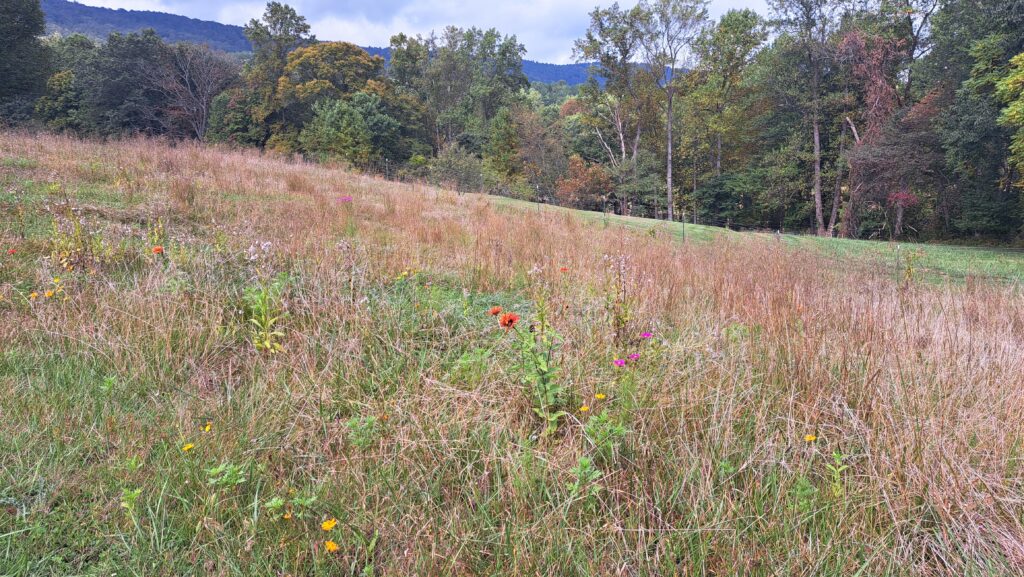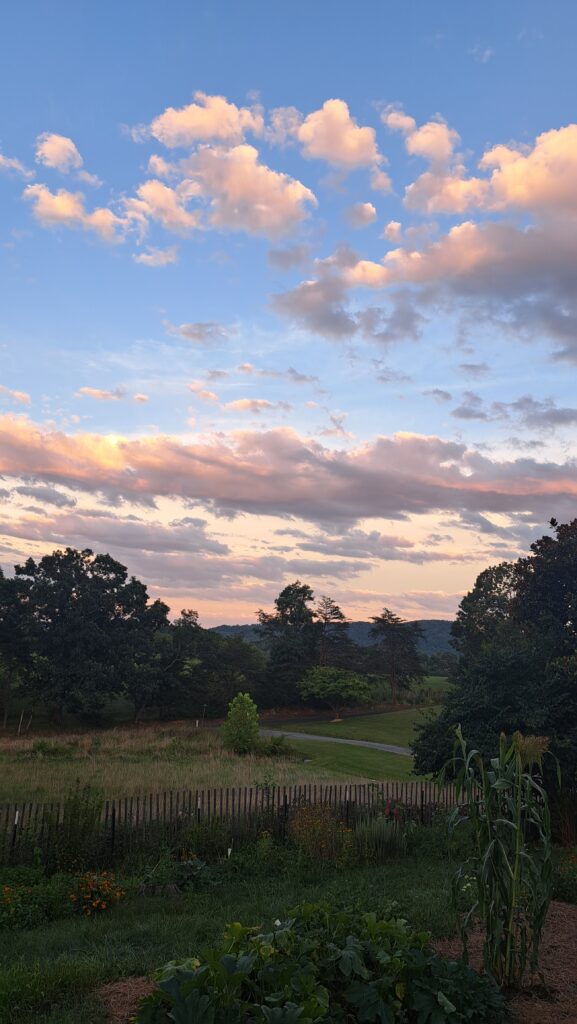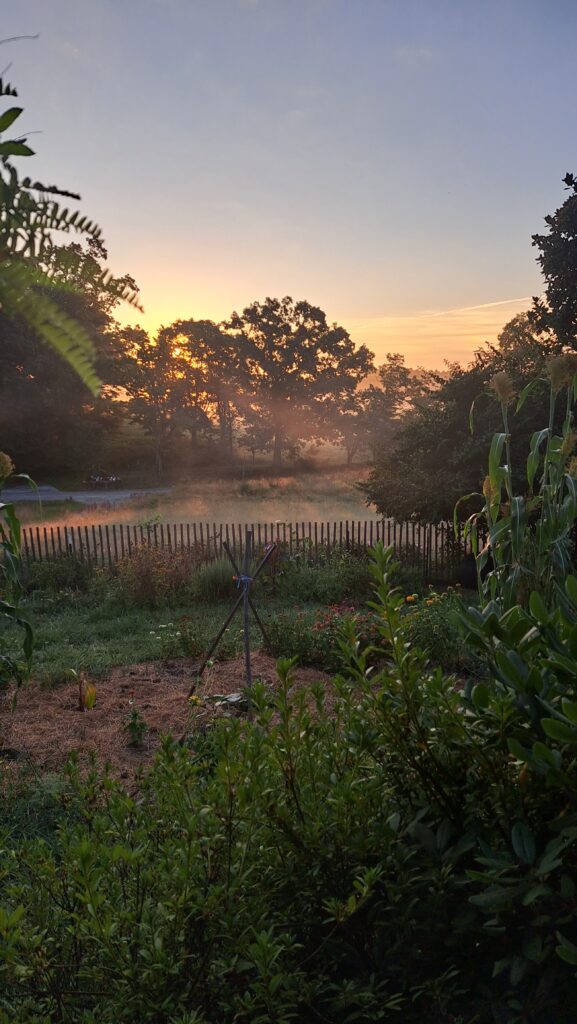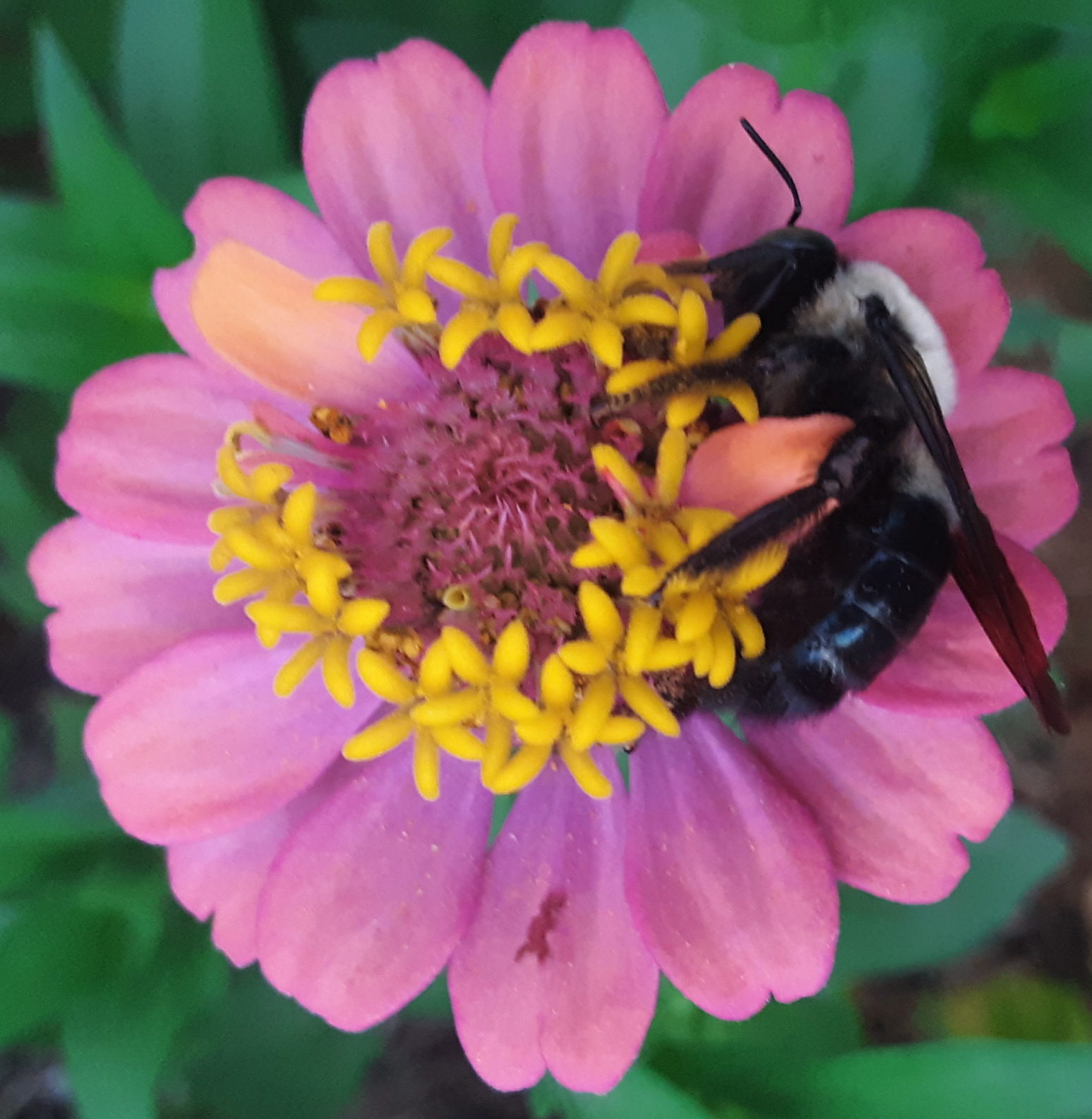
What I learned turning my typical mundane Virginia front lawn into a meadow
Recently I decided that mowing a lawn was a waste of my time. I had admittedly decided that on several other (yearly) occasions before. I was finally attempting to change the parameters of my typical lawn care in a neighborhood situation.
Since I did not inform my neighbors beforehand, I had some unexpected and unwanted “help”. More than once, a nearby resident decided to tame my transitional landscape from un-mowed to…scalped. By mowing half my lawn.
It must be a sign
First thing I learned: if you aren’t able to have a conversation with all of your nearby neighbors, put up a sign. You can hand paint one but make it clear: “NO-MOW. Buy one from a well-known organization, such as www.nwf.org (National Wildlife Federation). Or shop online artisans and local merchants who might be able to custom-make something that befits your tastes and garden and home style.
Just saying “No”
No May, no March. No Mow. In, May I celebrated Now-Mow March. Because spring comes early in Zone 6 here near the Blue Ridge. Regardless of whether you intend to establish a meadow, delaying mowing helps the plants that feed pollinators. They grow, and this helps the pollinators feed themselves, as typical landscape plants havent yet awakened from winter.
Also, if you live in the country like I do, it’s fascinating just to see which new things come up that you didn’t plant.
Future meadow
At any rate, it was time to establish a better system. That is the one-acre of wildflower meadow that I envisioned for my other (mostly unseen) neighbors: the local pollinators. After carefully reading reviews and descriptions of contents, I ordered my seed from American Meadows. The five-pound bag of seed came within a week, and I decided to begin my project immediately, instead of sowing in the fall.
I did not want to till up an acre because, though my electric Greenworks tiller is helpful in some applications, an acre requires a stronger tiller. I don’t have a tractor. Although I do have access to these things. I wanted to do a more low-tech solution with tools I already owned, so after several discussions with several of my gardening friends, I went about using my Husqvarna Riding mower.
No-Mow to No-Till: Planting Time
To begin, carefully measure the area to determine how much seed to buy.
Crop the grass at its lowest setting. (On my mower, that setting is “one”.)
After an early mow, come back a couple of days later and plant the seeds into a newly scalped lawn with a lawn spreader (a contraption typically used for grass seed or fertilizer). I borrowed it from my dad (Thanks, Dad!) I have seen them on sale at big box hardware stores for $35-40, so if you have a very large area to seed, it is still more affordable than renting or buying a tractor to seed.
Water in. I tried to plant the wildflower seed (mixed with Crimson Clover seed) right before I knew it was going to rain. Indeed, I finished planting in the rain, so no watering was needed.
Waiting

My notes from last year: “Planting was two weeks ago. And it’s now April 26. So far, I haven’t seen much crop up.” It was a very touch-and-go summer: Canadian wildfires tainted the air quality, though the conflagraton was thousands of miles away. Working outdoors that summer was not only hot, but dangerous for one’s health.
I finally began to see (non-native) Tithonia, Zinnia, Cornflower and Cosmos pop up along the edges of the field, and on the side of my driveway that the well-meaning neighbor hadn’t mowed.
Toward the end of the growing season, that meadow was starting to flower a lot. I delighted in the fact that butterflies and bees were also noticeably increasing amongst the blooms. I saw Orioles in my yard for the first time since I was a child. To me, long stalks and sporadic flowers are more visually interesting than my previous lawn maintenance efforts.
Year two: meadow maintenance
Going into the second year, I hired a neighbor to bush-hog my 10-month old meadow. This was to reduce the wear and tear on my riding mower that I need for where I still want some grass. I overseeded with an approximation of Mix #38 from Ernst via a local landscaping supply company in Charlottesville. I chose this mix because I wanted more natives than the American meadow mix had sent me. Spring began with a nice mixture of rainfall and sun, but all rain ceased beginning in June.
It’s now early July, and I am seeing some Tithonia pop up, thistles (which were a BIG hit with butterflies last summer and fall) and ascelpias tuberosa (Butterfly weed). We finally had some rain in the past few days, and I am hoping that means all those flowers last year will start to reappear.
To meadow, and beyond!


It is not the riot of color I envisioned (yet), but now my neighbors know what I am doing. The risk of coming home to a mowed meadow has diminished, thankfully. I think passers-by are curious, at least, and watching to see what happens. As am I.
Small blooms and new species in my life and in this yard so far has made my efforts worth it. My mowing chore is reduced to 33% of what it had been before. I have more time, and less gasoline and mower maintenance costs. No one is driving to the end of our road to gape at my meadow yet and take pictures, but that’s okay: If I spoke bird, moth or butterfly, I bet my yard is the toast of the town already!
To be continued…

